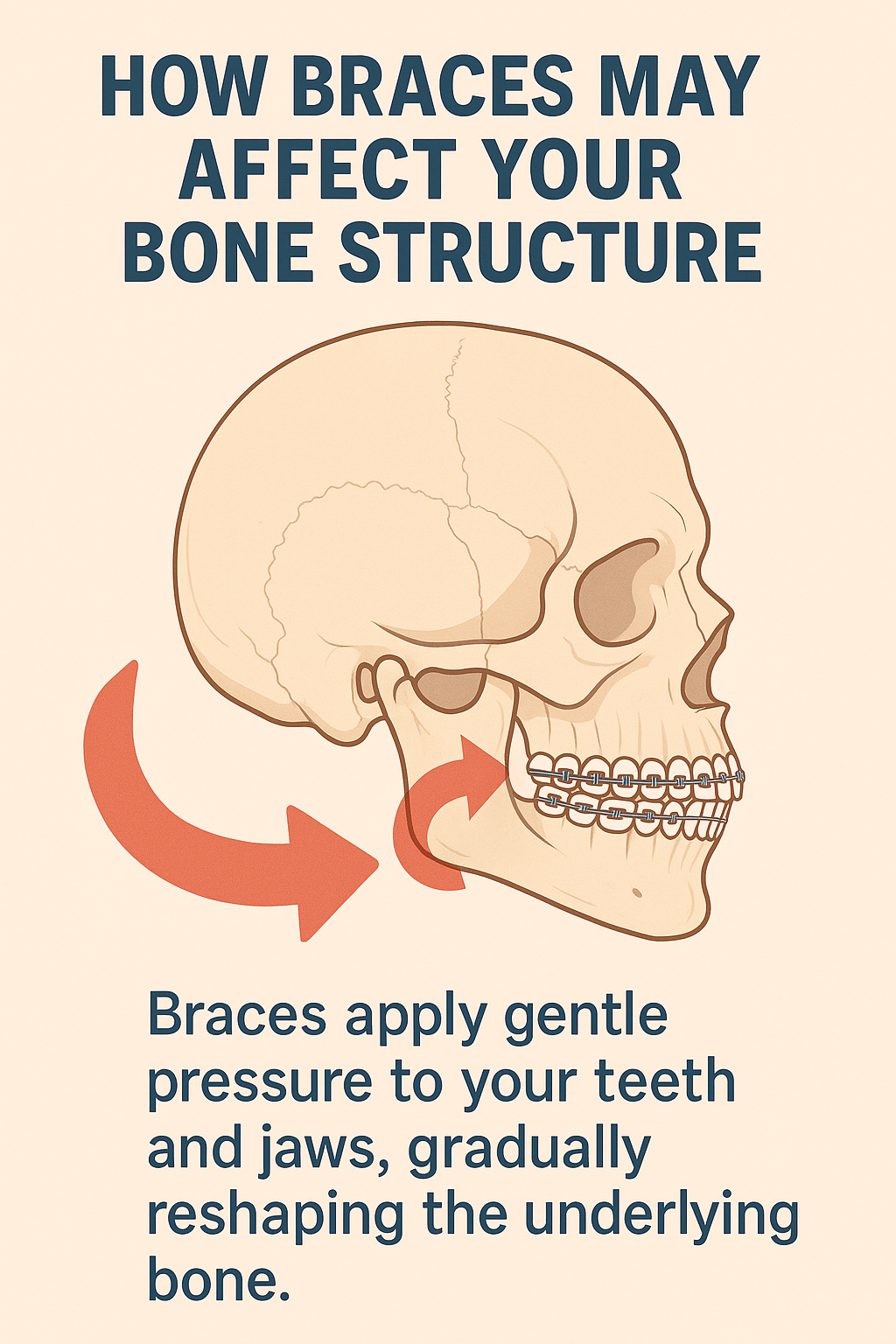Orthodontic braces are not just cosmetic tools — they create profound changes in your bone structure. But how exactly do they influence your bones? This article explores the biological mechanics behind braces and what long-term effects you should be aware of.
How Braces Work on a Biological Level
Braces apply continuous pressure on your teeth. This pressure is transferred to the bone surrounding the tooth roots, called the alveolar bone.
Key terms to know:
- Bone remodeling: A natural process where bone tissue is broken down and rebuilt.
- Osteoclasts & osteoblasts: Cells that break down and build bone respectively.
➡️ As the tooth moves, osteoclasts break down bone in the direction of movement, while osteoblasts build new bone behind it. This is how teeth shift and stay in their new position.
How Braces Affect Facial Bone Structure
Braces can have an influence beyond just teeth alignment:
- Jaw reshaping in growing patients
In teenagers, orthodontics can slightly alter jawbone growth, especially when combined with appliances like expanders or headgear. - Changes in facial aesthetics
Correcting bite and tooth position can subtly improve facial symmetry, jawline definition, and smile arc.
Risks and Considerations
While braces are generally safe, there are important bone-related risks:
- Root resorption
Over-movement can shorten tooth roots, making teeth less stable. - Bone density loss
Improper or prolonged force may reduce bone support. - Gum recession
Moving teeth too far out of the bone can cause gums to recede, exposing roots.
✅ Tip: Always consult with a board-certified orthodontist to evaluate bone thickness and density before treatment.
Long-Term Bone Health After Braces
After braces, a retainer is crucial to prevent bone from reverting to its old shape. Bone remodeling continues for months, even after braces are removed.
Maintaining bone health:
- Follow your retainer schedule
- Keep excellent oral hygiene
- Consider regular check-ups with your orthodontist and dentist
Conclusion
Braces do more than straighten teeth — they reshape your bone structure. Understanding this process helps you make informed decisions and ensures better long-term outcomes.

